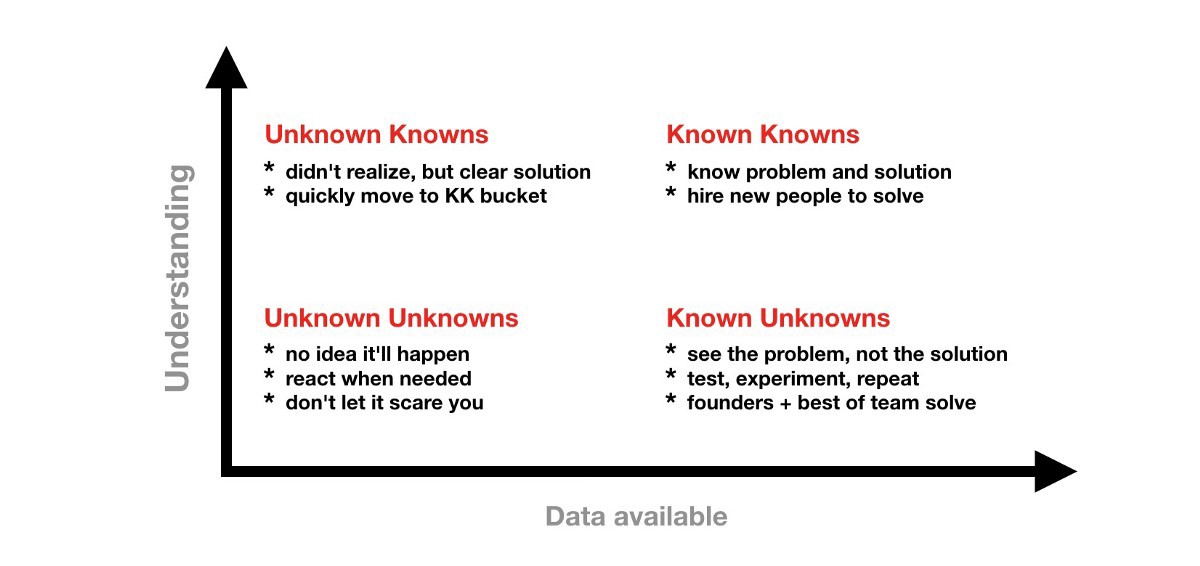
In one of my latest stories within the ‘User Experience is …’ series I talked around how to inspect both UX and Agile to provide a better product experience outcome.

In this and previous stories I have discussed how we need to adapt. There is no set formula for creating a good User Experience. It's all about context, what you know, what you need to know and what you don't know. In order to select the right tools to create more understanding and certainty so that the designed experience will be successful. It's a journey of gaining insight and learning to reduce risk and increase understanding of the customer value and needs.
Reports that say that something hasn't happened are always interesting to me, because as we know, there are known knowns; there are things we know we know. We also know there are known unknowns; that is to say we know there are some things we do not know.
Donald Rumsfeld, United States Secretary of Defence
Many designers want to know the ABC of UX. That's to say if you do A + B + C = great UX. Even more so, product managers and business stakeholders want designers to just 'do the UX'! They want to know the formula to make things more understandable, transparent, predictable and less risky.
However it never plays out like this. Every situation and context is different. So what you do in one product for one set of people, will not work in another product or for another set of people. The context will be different you might know different things, there might be different problems or gaps that you'll need to explore.
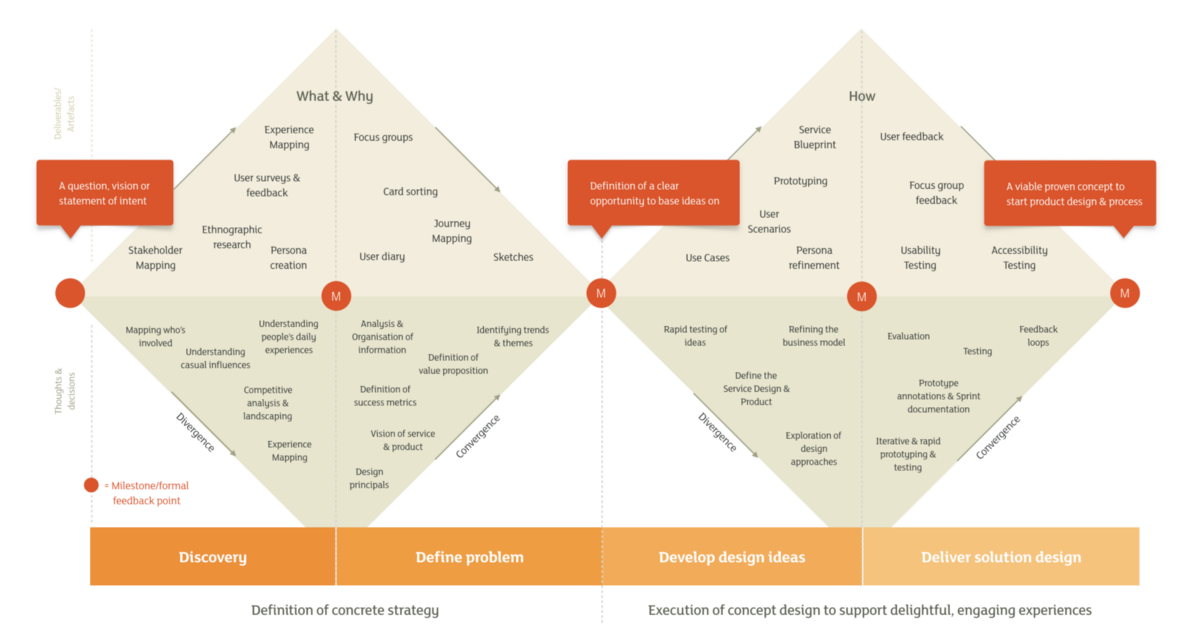
Adapted Design Council Double Diamond model including methods and techniques
So you won't always be able to do the same techniques and use the same tools to produce a good user experience. Tools simply make the job easier. However what is the same is being a creative problem solver. We're there to spot problems before they are felt by people or the business and find creative ways around any problems to improve the experience, service, proposition and benefit to the business. You're either a creative thinker who is a UX Designer, or you're not. There's no set of tools in the world that can give you that.
A builder has a tool belt. They look at a problem / work in front of them and then select what they think is the right tool for that step of the work. OK this is usually a big hammer right?! But guess what, that big hammer isn't always right! Sometimes a different, more refined tool is needed to solve the problem, or make the job easier. OK sometimes you just use brute force and this makes things worse, but you learn from it.
So while you can't always use the same tools, you are able to use a similar process / approach. Not every phase might need to be done in order or at all. Again, it's picking the right thing at the right time to get the outcome you're seeking.
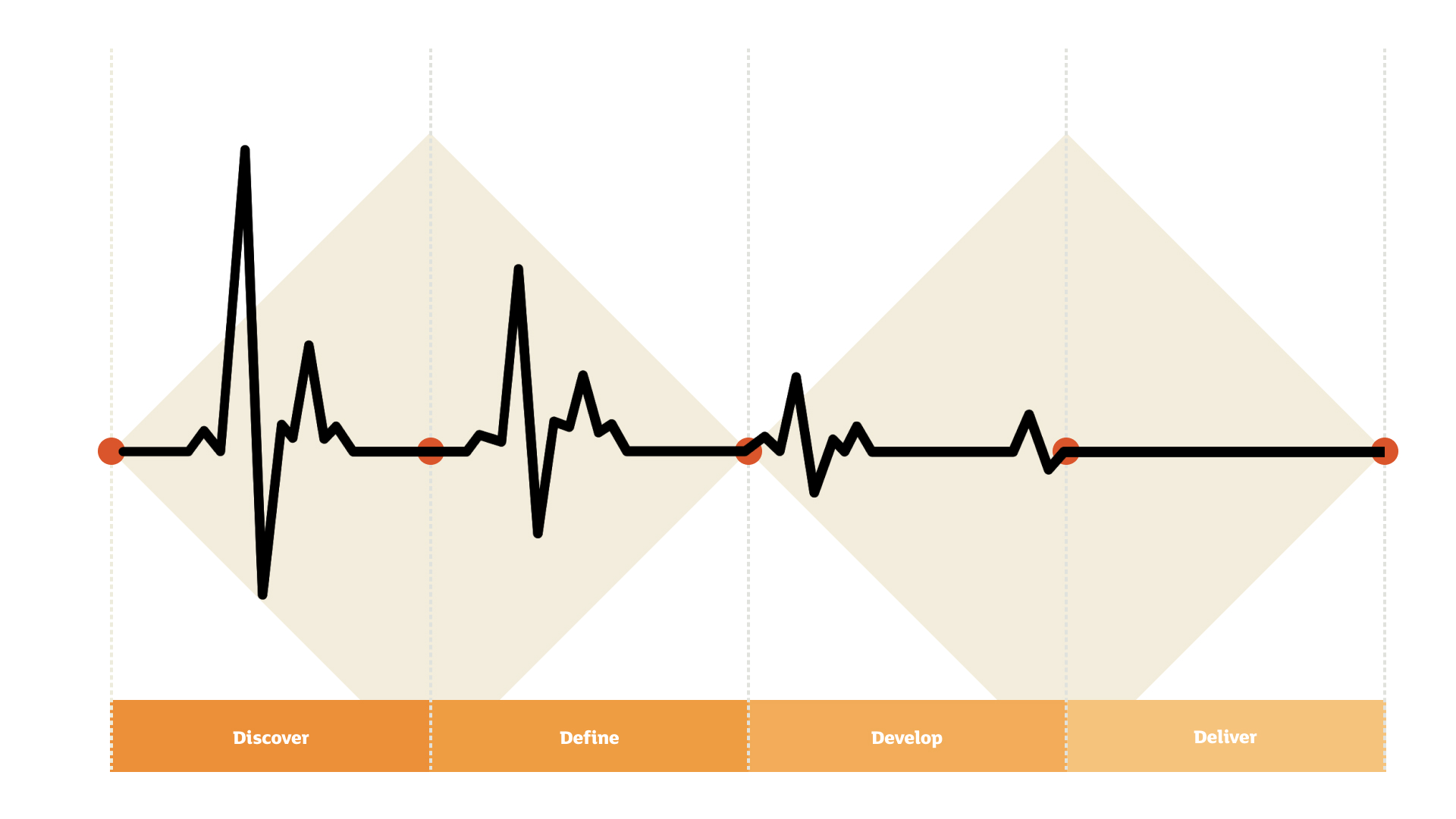
Working leanly through the Double Diamond to select the right tools to learn more.
Now, that places a lot of pressure on picking the right tool or step in a process. So this can be challenging, especially if you don't fully understand all the context or have experience and a number of projects under your belt where you've had to make these choices before. But that's OK, you'll learn this in time. All of us have gone through this learning curve and used the support of teams around us to learn from.
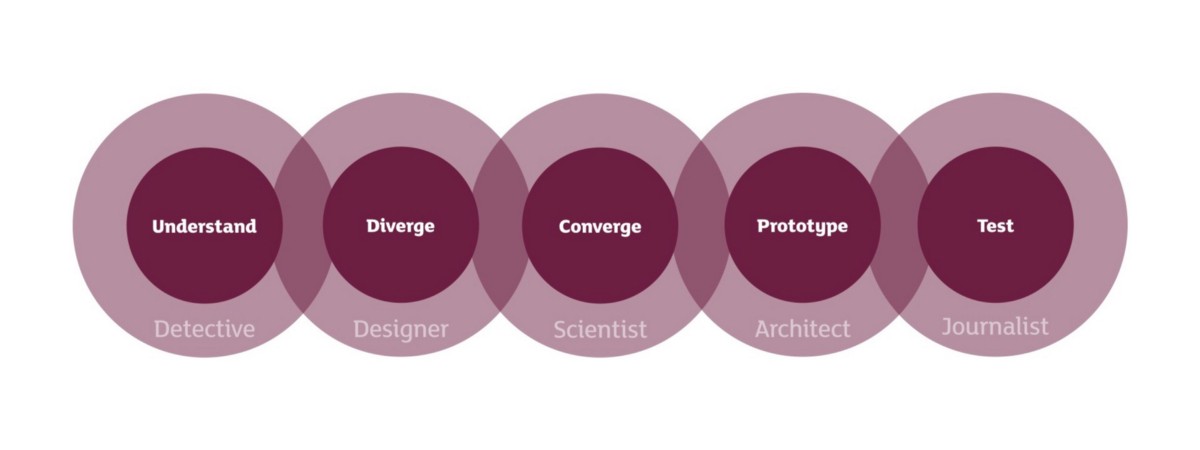
Mindsets involved in providing certainty
So, stop searching for this magic formula that is going to make you the best UX Designer you can be. Be a creative problem solver, explore and discover the problems and creative solutions to the problems. Then, choosing the right tool and next steps is what makes you good. It's about what insight you need to have in order to make the right design decisions. So as Tom Lombard says be a detective, an artist, a scientist, an architect and a journalist.
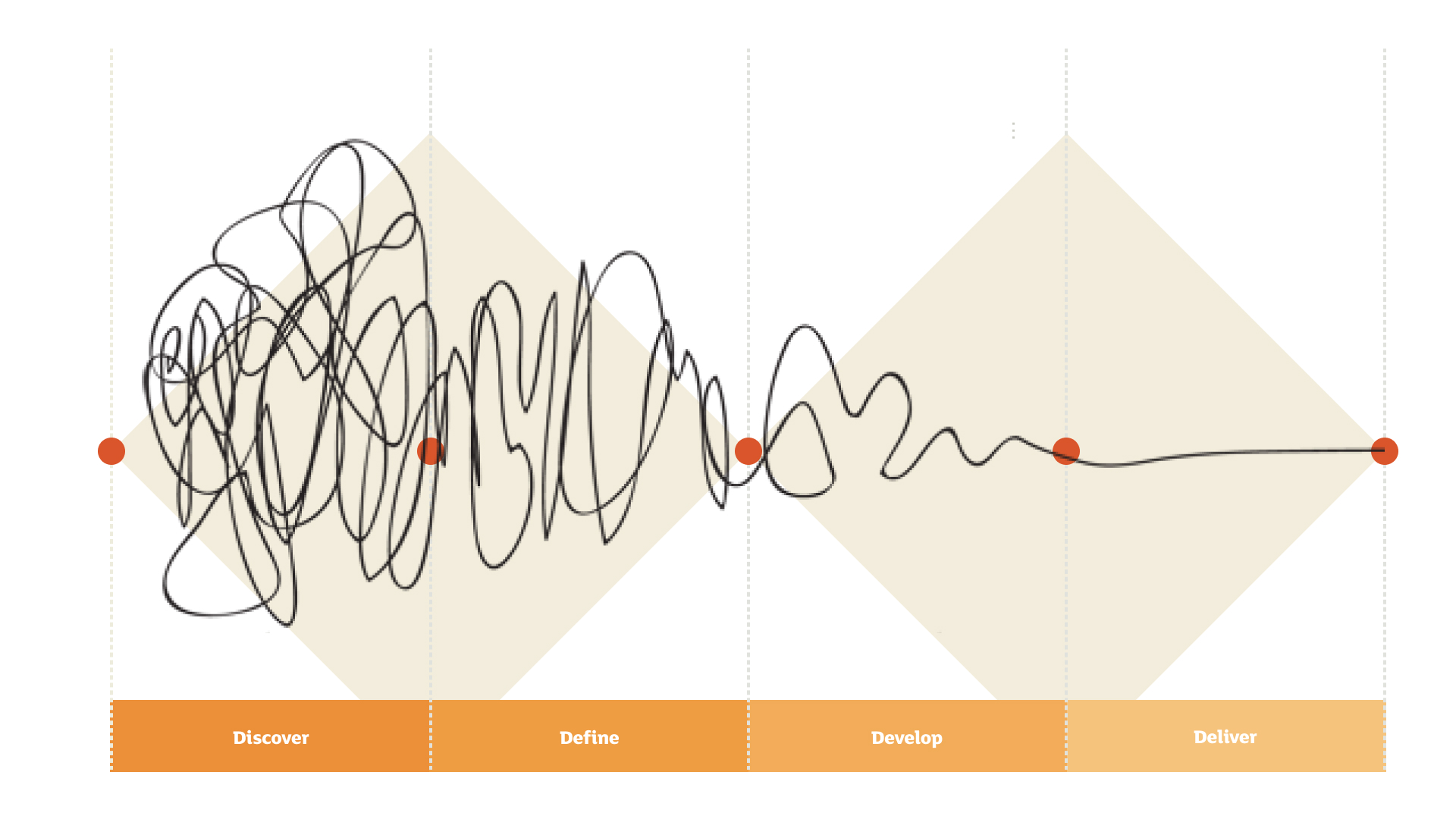
Certainty through the Double Diamond
Be passionate about UX and keep designing! Working leanly through the double diamond, increases your own understanding, providing more clarity and certainty around the problem space, likely solutions, but also how successful those likely solutions are likely to be.
This is useful for:
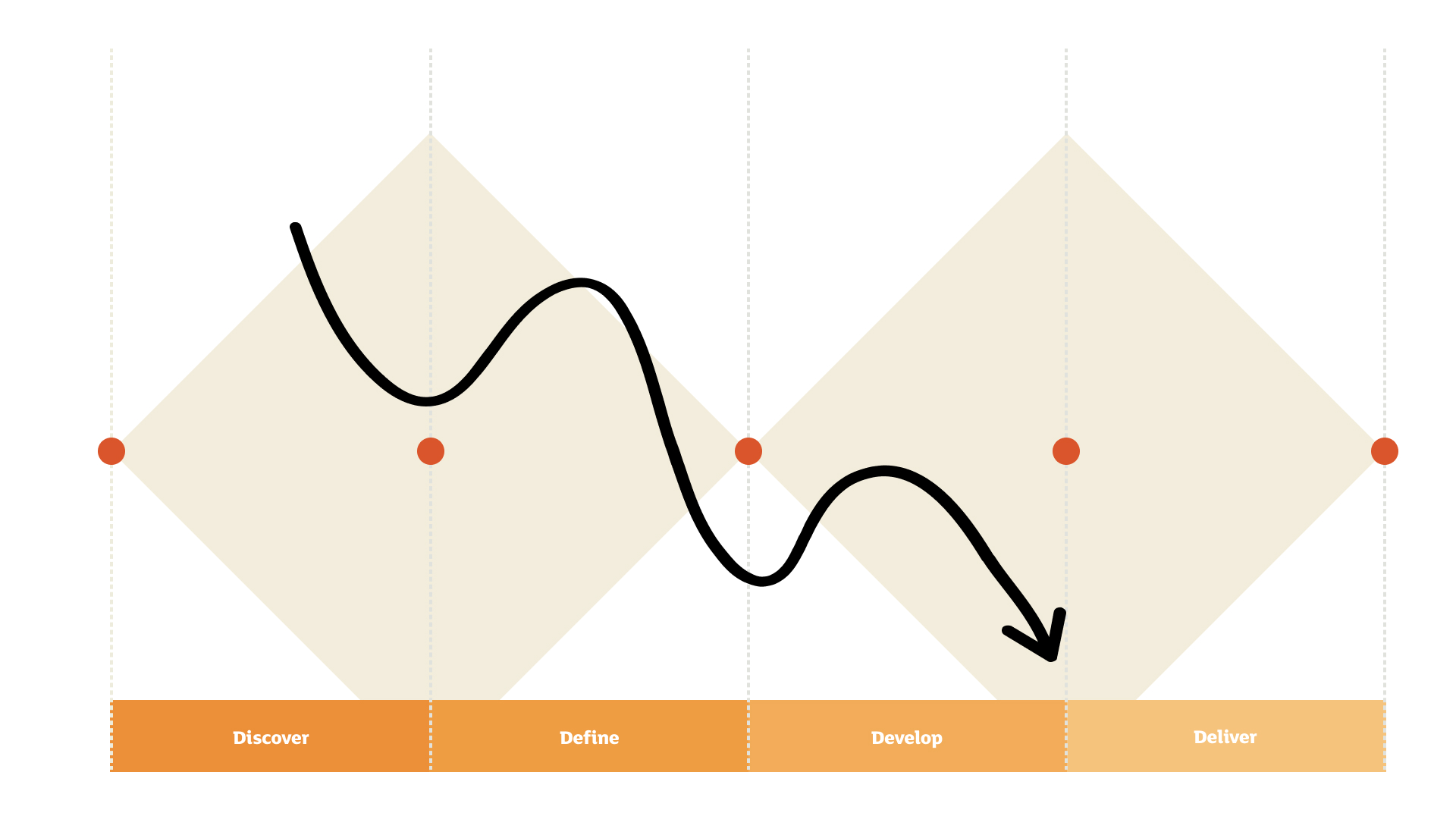
Reducing risk and rework through the Double Diamond
And the reason that this is done, is to fundamentally de-risk solutions and avoid spending money on larger engineering teams to provide and test a solution. Completing design work up front tests assumptions and hypothesis, discovers value for the business and people using the solution, so you can start to trade off complexity with value / time. Getting to the most important and impactful parts of the solution first and into the hands of people, to learn from them. This shortens latency of idea to market and also allows the business and people to start to benefit from the value that you've already delivered. And this can all be done in quick iterative pieces of work to test and learn.
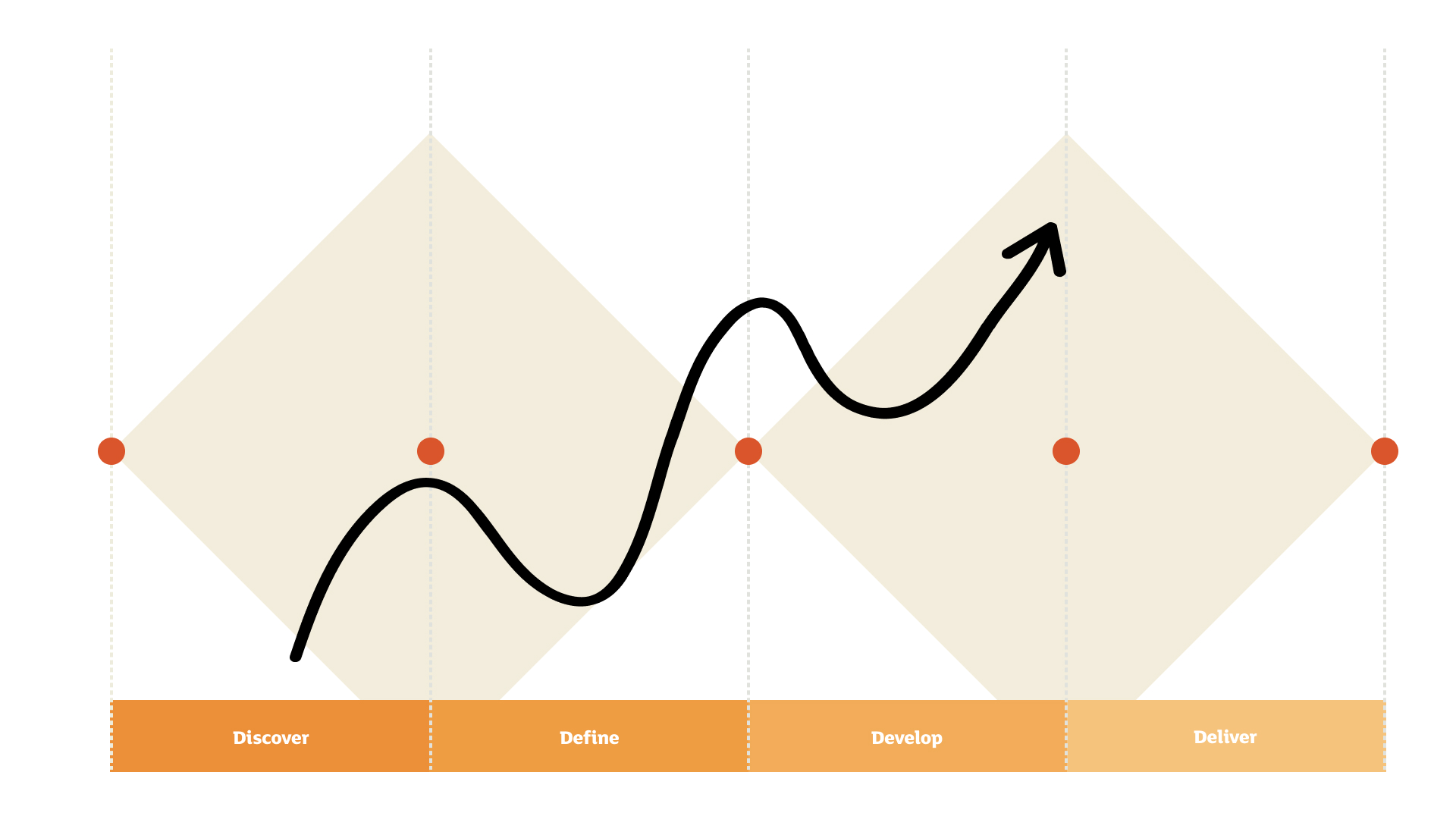
Costs increases as you move through the Double Diamond
And it's important to remember that, as you move through the Double Diamond costs increase. You've burnt time and resources to develop the certainty and understand the problem space and likely solutions. Also as you move through the double diamond the tools, techniques and activities become more resource intensive. Think about how easy and quickly it is to sketch ideas, versus producing high fidelity designs and then moving onto producing a high fidelity prototype on the other end of the scale.
But more than that. The team working on the product is likely to grow exponentially as the business understands how the solution is of value and how it's useful for people. So you'll likely have product managers, researchers, service designers, copywriters, engineers, testers, delivery managers (maybe?!) and maybe even engagement managers all join the team. Going from a handful of people who'd quite happily share a pizza to a large group, where it's a bun fight to get a slice!
And there is no shortcut to getting the experience, it takes time, but what you can do is learn from others. That could be the team you work with, other teams in your organisation, teams in the sector that you work in, or teams in other organisations. Think about a mentor to help support you in certain areas to accelerate through the learning curve.
And remember, you won't always get it right, you will need to adapt and pivot. The validation of getting it right is satisfying and valuable, but you can often learn more from getting it wrong, as it teaches you to avoid these pitfalls next time.